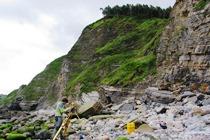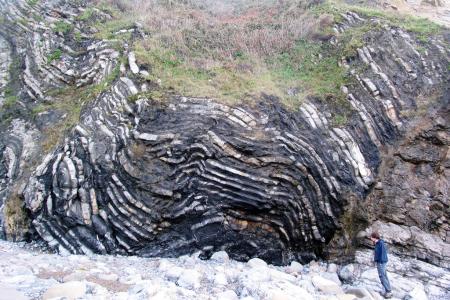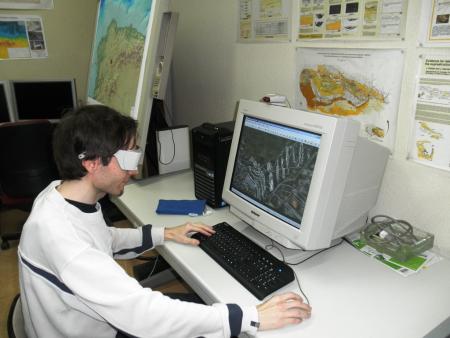The researchers have used a software patented by a spin-off of the University of Oviedo in the analysis of the folds of the Jurassic rocks of the eastern coast. With this technique, previously-inaccessible zones can now be studied.
The application of a cutting-edge technology perfected by the University of Oviedo has allowed researchers from the Department of Geology to analyze in 3D the formation of certain structures in Jurassic rocks on the eastern coast of Asturias. Folds and faults that, according to the first results of the research, date back to the creation of the Gulf of Biscay, 100 million years ago, and the later rise of the Cantabrian mountain range.
The research group on Fold Analysis, led by Professors Josep Poblet and Fernando Bastida, has pioneered the application of photogrammetry to geological research. "The use of this technique allows us to view the images without any distortion", Poblet explains. The calibrated cameras take pictures on which researchers draw and interpret all the geological elements through a computer application that allows them to view the results of those rock formation in 3D. The studies conducted have also required the use of high-precision GPSes, cutting-edge topographic techniques and georeferenced photographies.
The research project, named Fraveple, has analyzed different enclaves on the eastern Asturian coast using the technology developed by a spin-off of the University. Professor Santiago Martín, from the Department of Construction and Manufacturing Engineering, created the IDEASCAD enterprise to commercialize a 3D software application that, using shutter glasses, allows the user to view images taken by calibrated cameras without any kind of distortion.
The research, published in international journals, is led by the group of Fold Analysis, which is in turn composed by Professors from the Departments of Geology and Mathematics, and which collaborates with the University of Cardiff (United Kingdom) and the Jurassic Museum of Asturias.
This technology has allowed the geologists of the University of Oviedo to reach very precise results in areas of the coast that could not be accessed before. The most promising conclusions came from the analysis of the Ensenada de la Conejera, a cove near Villaviciosa. There, scientists where able to study the structures of very steep cliffs that can not be accessed. The analysis of rocks dating from the Jurassic period reveal details on how the Bay of Biscay came to be and, later on, how the Cantabrian Mountain Range was risen.
The Fraveple project is funded by the Ministry of Economy and Competitiveness through the National Science Plan. Professors from the Department of Mathematicas and experts from the University of Cardiff (United Kingdom) are part of the research group, which also has the collaboration of experts from the Jurassic Museum of Asturias (MUJA). The results yielded by the implementation of this new technique in the research conducted on the eastern coast of Asturias have been presented at the 8th Geological Congress of Spain, and published by prestigious international journals.
Bibliographical References:
Project: Desarrollo de fracturas y venas asociadas al plegamiento (FRAVEPLE)
Tectonophysics UZKEDA, H.; BULNES, M.; POBLET, J.; GARCIA-RAMOS, J.C. y PINUELA, L. (en prensa): Buttressing and reverse reactivation of a normal fault in the Jurassic rocks of the Asturian Basin, NW Iberian Peninsula. Tectonophysics.
Computers & Geosciences MARTIN, S.; UZKEDA, H.; POBLET, J.; BULNES, M. y RUBIO, R. (2013): Construction of accurate geological cross-sections along trenches, cliffs and mountain slopes using photogrammetry. Computers & Geosciences, 51: 90-100.





